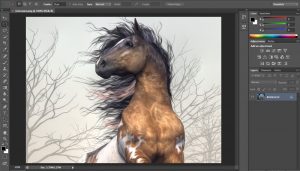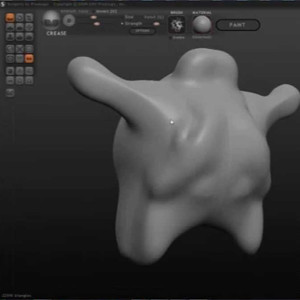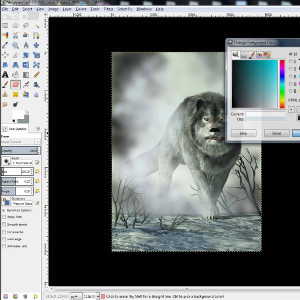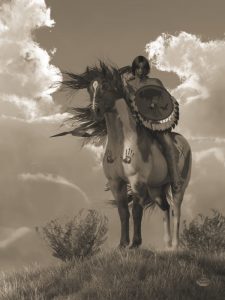What is Photoshop?
Photoshop, a product description
How to get it

For a long time, Photoshop was a rather expensive application that you had to buy at a place like Best Buy off the shelf. Later on, you could buy it online and download it, but even then, it cost hundreds of dollars. Now however, Adobe (the company that produces Photoshop) has made it available through a subscription model. That makes it way more comfortable to try out. As I write this, you can get a monthly subscription as low as 10 bucks a month.
Watch Me Get Photoshop
I recorded myself actually getting the latest version of Photoshop. So if you want a video walk through of how to get it, here you go:
How I Make Art – 3D Rendering
Overview
Rendering, also called “digital rendering” or “3-D rendering” is a relatively new form of art made possible by the existence of computers. Essentially, it is the creation of two-dimensional artwork using a computer to generate an image. The artist describes the scene in a way that the computer can understand. The computer then uses that description to simulate a 3D reality from which it takes a virtual snapshot. That snapshot can then be left in digital format or be printed out by the artist.
Modeling

The first step in creating render art is the creation of a virtual model. This is analogous to sculpting a model from clay in the real world. The artist begins with a virtual lump of clay, often a sphere or cube, then molds model by stretching it, twisting it, and adding on to it. The process can get rather elaborate. Model making software can cost thousands of dollars, but there are some free applications, such as Blender 3D (which I use) that are quite capable of producing high end models. A few such applications are:
- Blender3D (free)
- Sculptris (free)
- Maya (not free, but one of the applications you may need to learn if you want to go pro).
Skinning
A virtual model really only defines a shape. Generally, modeling software will let you define how the surface of that model appears (color, texture, reflectivity, etc.) but, more complex models call for skinning. Skinning is the process of creating of what is known as a UV Map. A UV Map is a special picture file that can be wrapped around a model to give it a surface. It’s sort of flattened version of the model analogous to the pattern one uses to cut material for clothing. Modeling software will help to create the UV Map, but I use image editing software, such as Photoshop or GIMP, to actually color in the UV Map.
Rigging
Certain complex models might call for something known as rigging. Rigging allows the artist to reposition certain parts of a model rather than having to remold a whole new one. For instance, if I create a model of a human form, I may want to be able to reuse that model in different poses. Rather than shaping a new model for every pose, I can rig a single model virtual skeleton. I assign groups of polygons to certain “bones” and then define how those bones can move in relation to one another. I use Blender3D for this. But other applications include Poser and Daz Studio.
Buying 3D Models
Sometimes, rather than making my own models, I will buy them. There is a community of 3D artists such as myself, and oftentimes, such artists will make their models available to others. Sites such as Daz3D.com and Renderosity.com offer a marketplace for both static and rigged models. Purchase of such models will include a license to commercially produce images using them. In effect, they become an art supply for producing images.
Layout

The layout stage of rendering is where the artist defines the spatial relationships between objects in a scene. The objects are models created in the prior steps. This step also includes defining the light sources for the scene as well as atmospheric aspects of the image such a haze and fog.
Rendering
This is the step that is handled by the computer (or network of computers – called a render farm). The computer uses advanced mathematical algorithms to simulate the effects of the light and atmosphere upon the objects set up during the layout phase. This can take anywhere from a few minutes to many days depending upon the complexity of the screen. The final product is a CGI, computer generated image, usually in the form of a bitmap or JPEG file.
Post Production/Painting

This is the part that would be more familiar to traditional artists. In the post production phase, the image is loaded into image editing software such as Photoshop, Corel Painter, or GIMP. The artist then makes adjustments to the image ranging from simple color changes to painting new parts.
Printing
The final step in the rendering process is the production of the physical work of art. This is done by using any number of computer printers. They can be a simple standard inkjet printer printing on photo paper or monstrous wide format printer printing on canvas. I prefer the latter. High quality prints on canvas are often called giclées, though now, most places just call them canvas prints. This can also be outsourced to a commercial print-on-demand company.
If you’d like to see a high speed demonstration, here is an hour long session condensed into two minutes:
It’s a complex way to create art, involving skills of multiple artistic disciplines, but the results can be quite spectacular. It’s a form of creation that is new to the art world.
Would you like to know more about some of my art secrets and see lots of my art: sign up for my mailing list.


